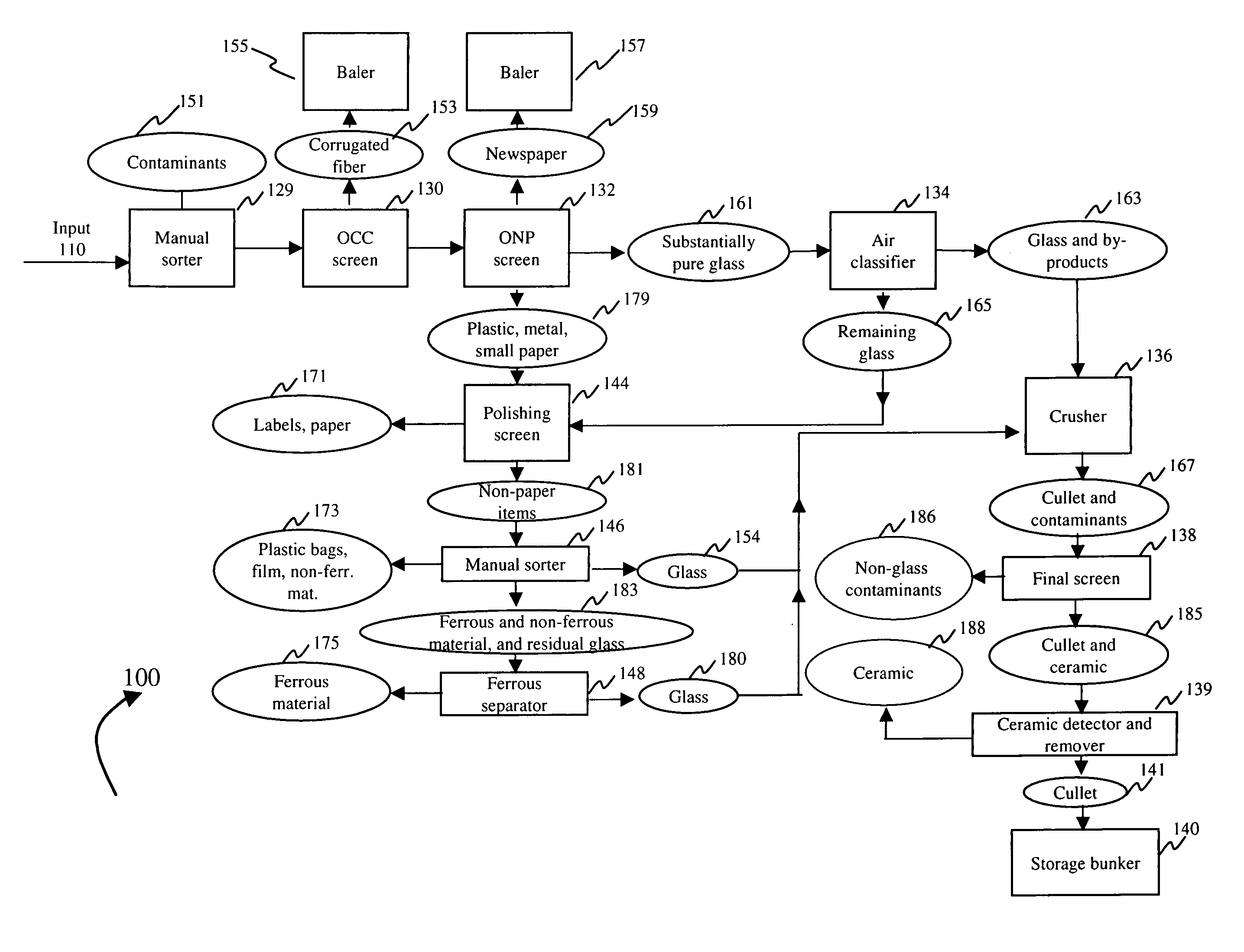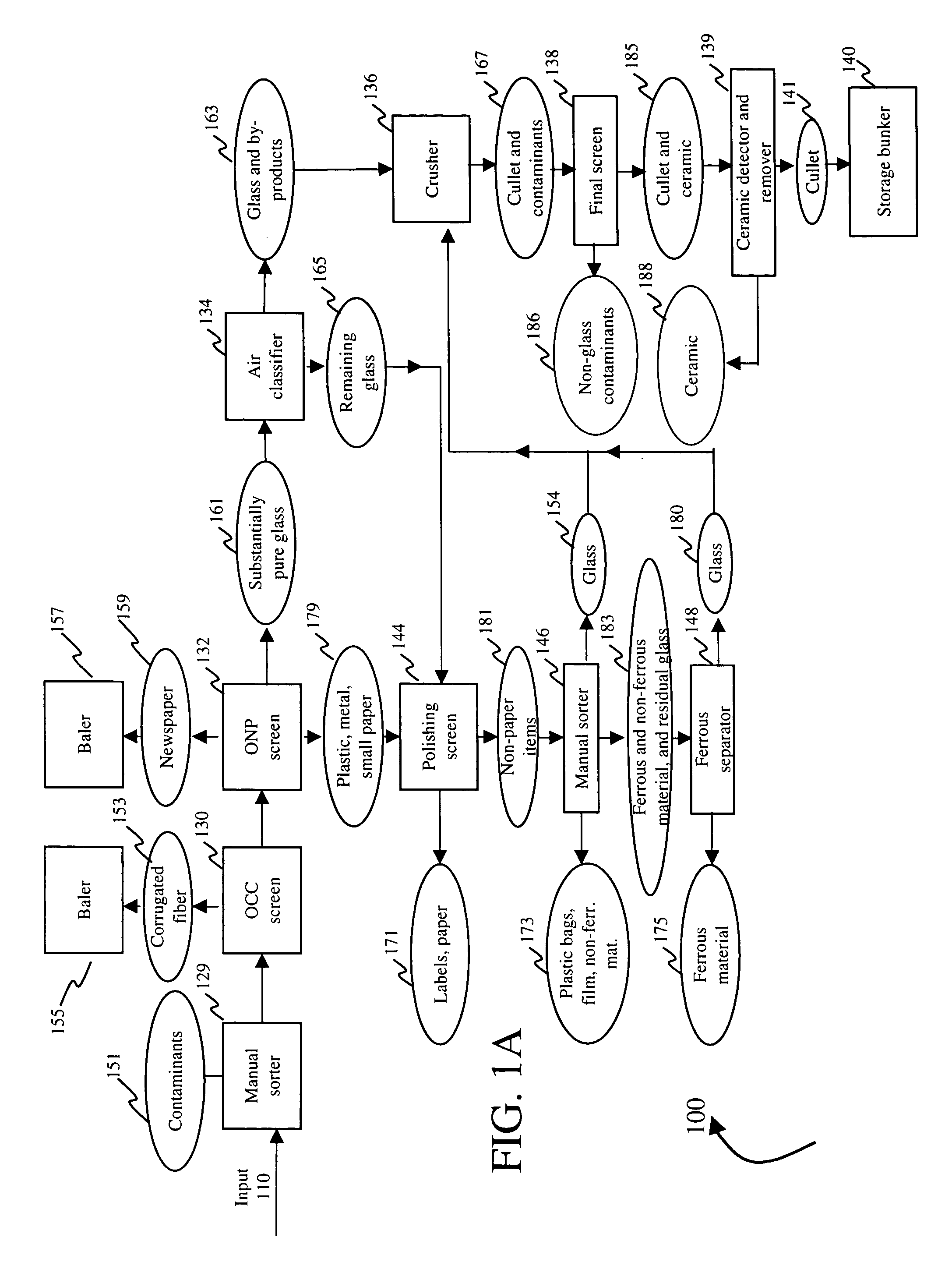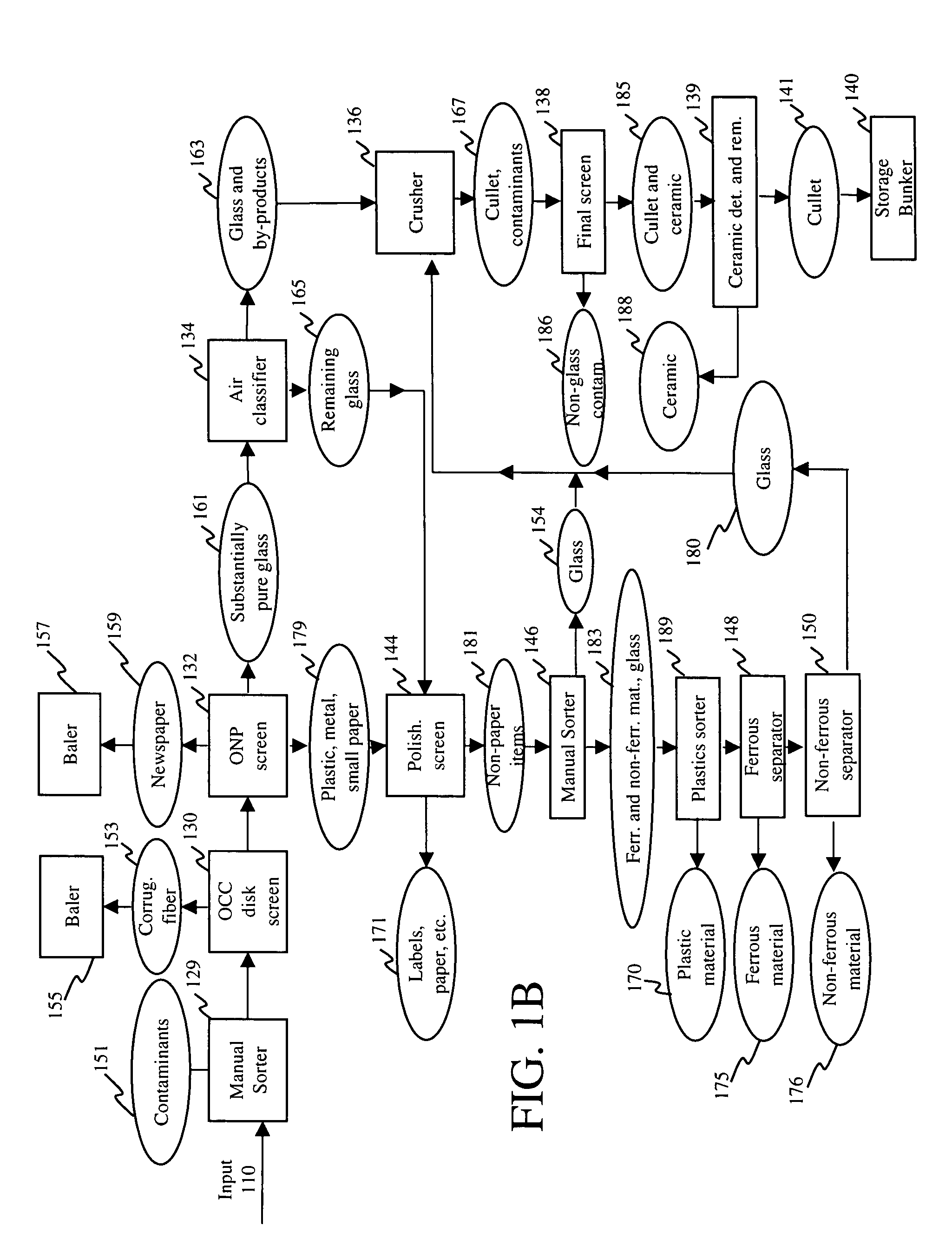Systems and methods for sorting recyclables at a material recovery facility
a technology of recycling and material recovery facility, applied in glass recycling, gas current separation, grain treatment, etc., can solve the problems of increased maintenance costs, reduced labor costs, and substantial wear and tear of machinery and equipmen
- Summary
- Abstract
- Description
- Claims
- Application Information
AI Technical Summary
Problems solved by technology
Method used
Image
Examples
Embodiment Construction
[0024] Embodiments of the present invention provide recycling systems and methods that can recover and process all (or substantially all) of the glass portion of an incoming stream of commingled recyclables for eventual use as material for, e.g., bottle manufacturing, without having to sort the glass by size and / or color. The resulting glass can be used, for example, in connection with de-coloring / coloring technology, such as described in U.S. Pat. No. 5,718,737, entitled, “Method of Recycling Mixed Colored Cullet into Amber, Green, or Flint Glass,” U.S. Pat. No. 6,230,521, entitled, “Method of Recycling Batches of Mixed Color Cullet into Amber, Green, or Flint Glass with Selected Properties,” and / or U.S. Pat. No. 6,763,280, entitled, “Automated Process for Recycling Batches of Mixed Color Cullet into Amber, Green, or Flint Glass with Selected Properties,” each of which are incorporated herein by reference.
[0025] Embodiments of the present invention also provide an automated or sub...
PUM
 Login to View More
Login to View More Abstract
Description
Claims
Application Information
 Login to View More
Login to View More - R&D
- Intellectual Property
- Life Sciences
- Materials
- Tech Scout
- Unparalleled Data Quality
- Higher Quality Content
- 60% Fewer Hallucinations
Browse by: Latest US Patents, China's latest patents, Technical Efficacy Thesaurus, Application Domain, Technology Topic, Popular Technical Reports.
© 2025 PatSnap. All rights reserved.Legal|Privacy policy|Modern Slavery Act Transparency Statement|Sitemap|About US| Contact US: help@patsnap.com



